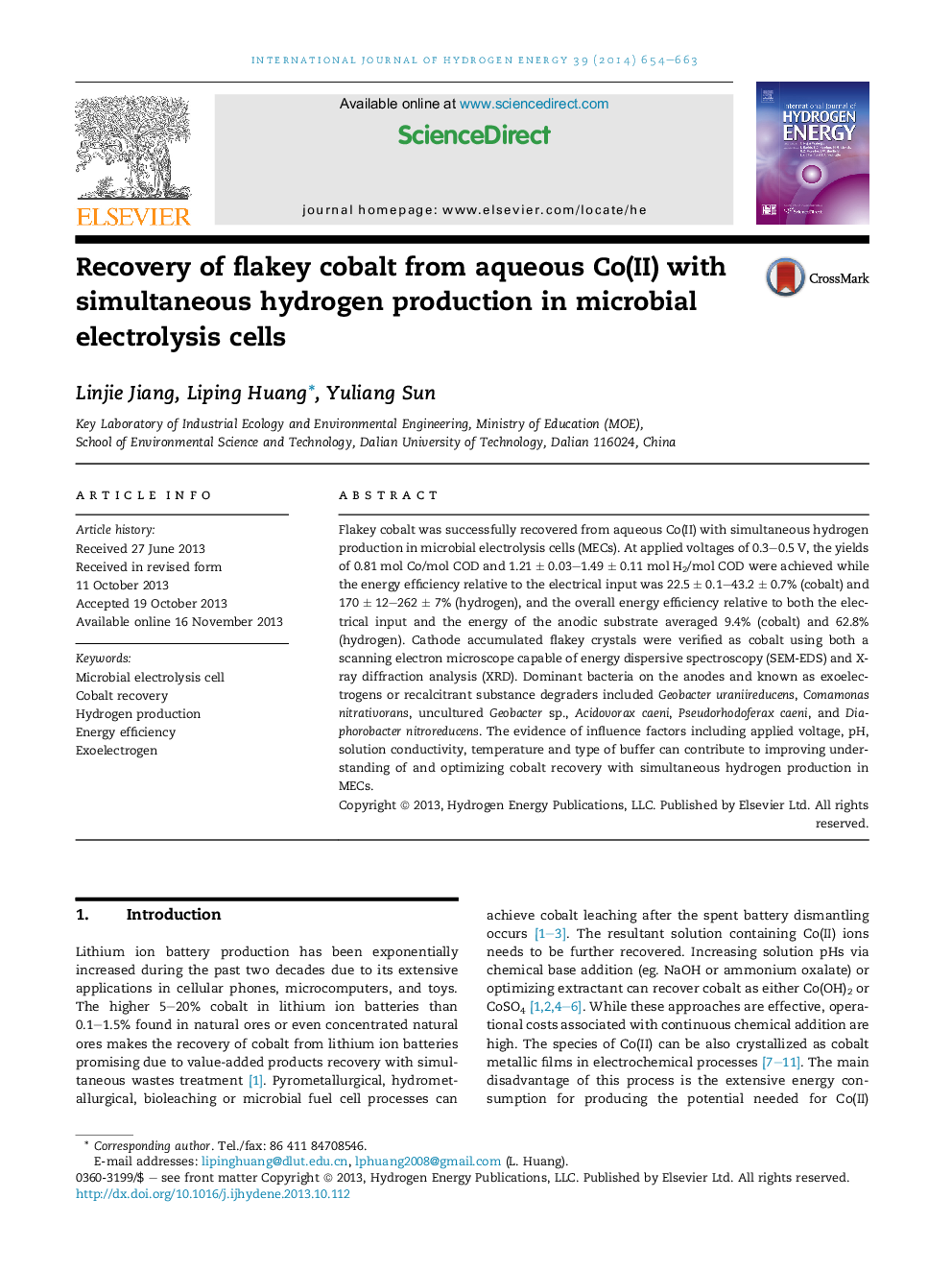| Article ID | Journal | Published Year | Pages | File Type |
|---|---|---|---|---|
| 1276507 | International Journal of Hydrogen Energy | 2014 | 10 Pages |
•Flakey cobalt was recovered with simultaneous hydrogen production from MECs.•Operational efficiencies were extensively assessed.•Applied voltage, pH, solution conductivity, type of buffer affected performance.•Apparent activation energy of 35.1 kJ/mol was estimated.
Flakey cobalt was successfully recovered from aqueous Co(II) with simultaneous hydrogen production in microbial electrolysis cells (MECs). At applied voltages of 0.3–0.5 V, the yields of 0.81 mol Co/mol COD and 1.21 ± 0.03–1.49 ± 0.11 mol H2/mol COD were achieved while the energy efficiency relative to the electrical input was 22.5 ± 0.1–43.2 ± 0.7% (cobalt) and 170 ± 12–262 ± 7% (hydrogen), and the overall energy efficiency relative to both the electrical input and the energy of the anodic substrate averaged 9.4% (cobalt) and 62.8% (hydrogen). Cathode accumulated flakey crystals were verified as cobalt using both a scanning electron microscope capable of energy dispersive spectroscopy (SEM-EDS) and X-ray diffraction analysis (XRD). Dominant bacteria on the anodes and known as exoelectrogens or recalcitrant substance degraders included Geobacter uraniireducens, Comamonas nitrativorans, uncultured Geobacter sp., Acidovorax caeni, Pseudorhodoferax caeni, and Diaphorobacter nitroreducens. The evidence of influence factors including applied voltage, pH, solution conductivity, temperature and type of buffer can contribute to improving understanding of and optimizing cobalt recovery with simultaneous hydrogen production in MECs.
